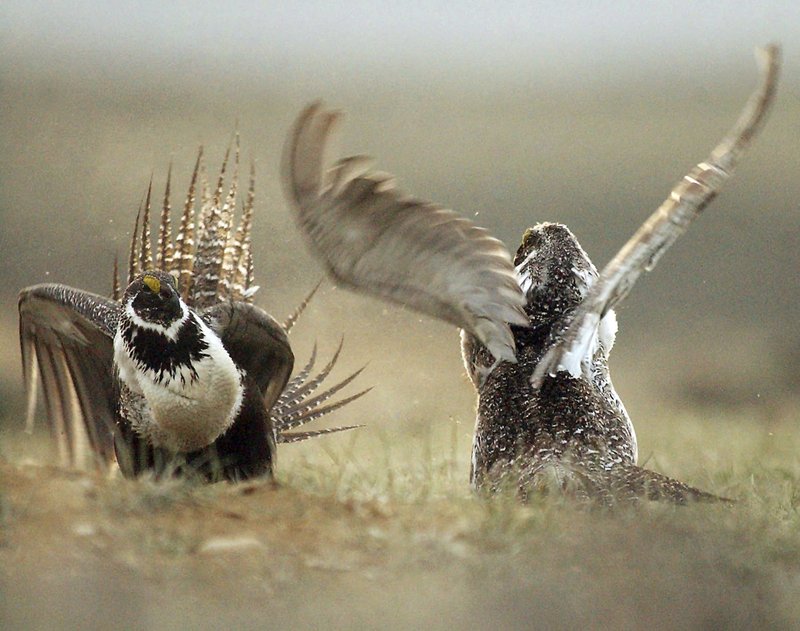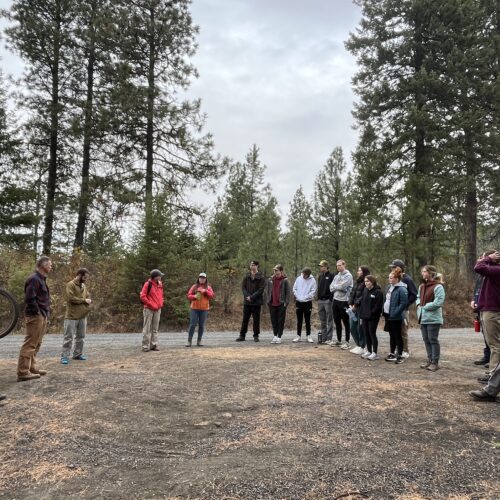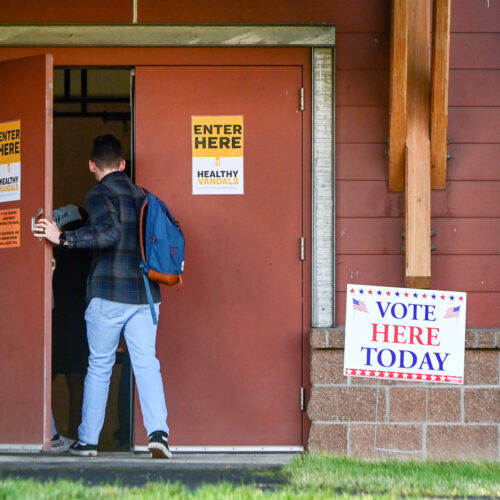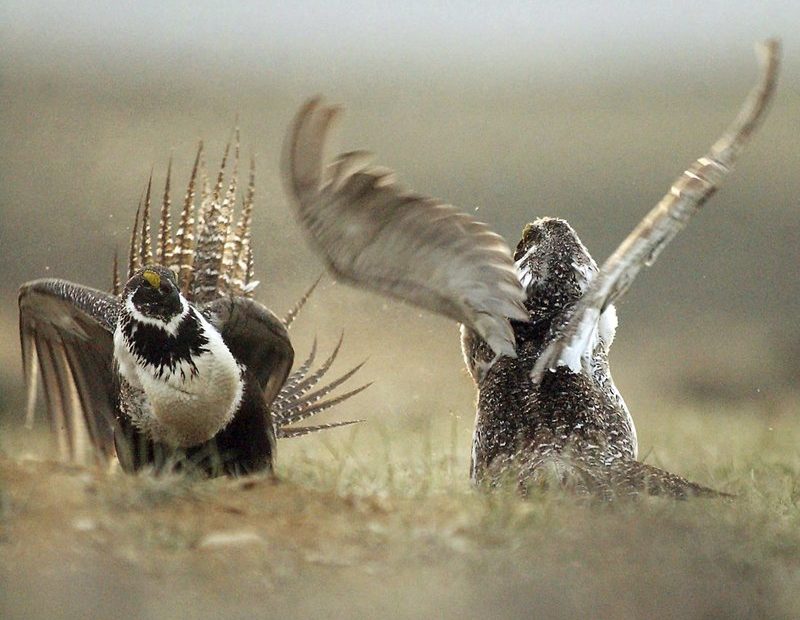
Numbers Of Imperiled Sage Grouse Tumble Even Lower Across The West
Read On
BY MATTHEW BROWN / AP
Montana’s greater sage grouse population has fallen more than 40% over the past three years, mirroring recent declines across the U.S. West for the bird species that federal officials rejected for protections in 2015.
State wildlife officials estimate there were about 44,000 ground-dwelling sage grouse in Montana this spring. The figure is included in a report to be delivered to state lawmakers later this month.
Sage grouse once numbered in the millions but have seen their range that stretches across portions of 11 states diminished by oil and gas drilling, wildfires, grazing and other pressures.
Grouse numbers also continued to drop in 2019 in Oregon, Idaho and Wyoming. Weather can affect populations from year to year, and wildlife officials say those short-term cycles are most directly responsible for the recent declines.
Montana’s drop from almost 78,000 grouse in 2016 was traced to an extreme drought in eastern parts of the state in 2017, said Catherine Wightman with Montana Fish, Wildlife and Parks.
The decline coincides with increased efforts to conserve grouse habitat, including by working with private landowners to adopt grazing and other practices that are more beneficial to the bird.
“That doesn’t mean those plans are not working and doing the right thing,” said Wightman. “We’re seeing this overall decline. The analysis shows overall the (population) peaks are getting a little lower and the valleys are getting a little lower. What we’d like to do is stabilize our numbers.”
Wyoming’s population drop was measured by counting the number of male birds strutting on grouse breeding grounds known as leks, said Sara DiRienzo with Wyoming Game and Fish. The number of birds per lek has dropped about 20 percent since 2018 and more than 40 percent since 2016, according to agency figures.
However, this year’s numbers are still above the low levels reached in 2013, DiRienzo said, and likely reflect dry conditions and extreme winter weather that caused many chicks to die.
Wyoming does not have an overall population estimate.
Brian Rutledge with the National Audubon Society said the population drops should not be written off just because they are cyclical, since ongoing habitat loss makes it harder for the bird’s numbers to rebound each time they drop.
“We’re not in a position to say this is OK. We have too many things working against us,” he said.
In Oregon, bird numbers this year reached their lowest number since reliable estimates have been recorded beginning in 1996, said sage grouse conservation coordinator Lee Foster with the Oregon Department of Fish and Wildlife. The state counted approximately 14,000 grouse, less than half the state’s target of 30,000 birds.
“I’m very hopeful we’re at the bottom this year,” Foster said. “There is cause for concern even if the trend fits within what we would expect with the population cycle.”
The 2015 decision not to protect sage grouse under the Endangered Species Act came after state and federal officials crafted sweeping conservation plans for the birds across their range.
Under Republican President Donald Trump, the Interior Department has relaxed restrictions on mining and drilling that were included in the original plans adopted under his Democratic predecessor, Barack Obama. Impacts from those changes are expected to be long-term and not reflected in the latest population numbers.
Copyright 2019 Associated Press
Related Stories:
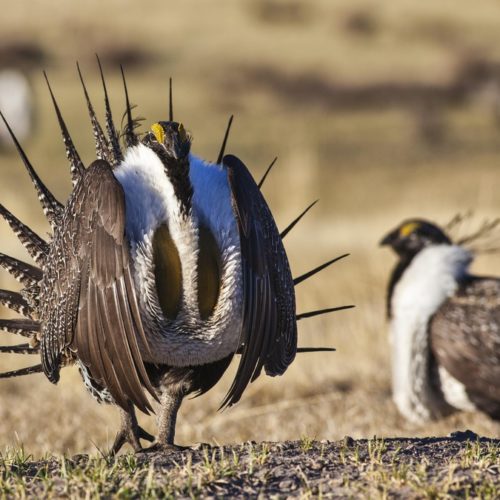
‘It Sometimes Is Depressing’: Conservation Moves Forward, And Uphill, For Washington’s Sage Grouse
Sage grouse in the Columbia Basin are cut off from others in Oregon and southern Idaho, making them unique in their recovery. In 1998, Washington listed its sage grouse as threatened. They now occupy around 8 percent of their historic range in the state.
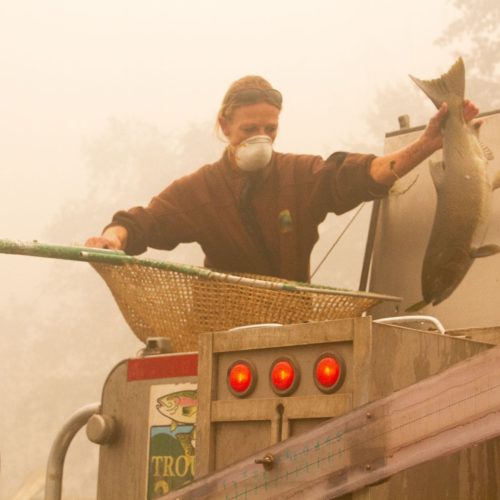
We Can See Clearly Now The Smoke Is Gone: 2020 Fires Greatly Affected Northwest Wildlife Habitat
“In this year of, well, exceptions, we’ve been handed an unprecedented level of damage to our wildlife mitigation program,” a Washington state wildlife biologist recently told the Northwest Power and Conservation Council.

Could Relocating Sage Grouse Save The Birds In Washington?
Moving imperiled sage grouse from one spot to another can be hard on the birds. But research from Washington State University suggests that after a restless adjustment period, the birds eventually get used to their new homes.

